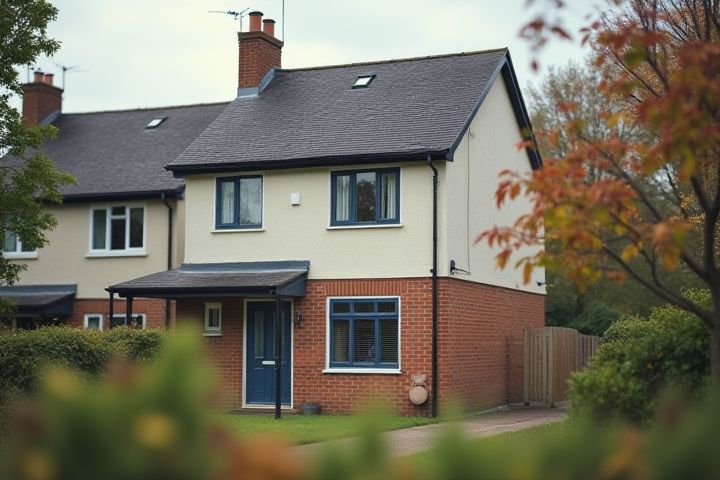
House prices vary due to a combination of factors including location, economic conditions, and demand-supply dynamics. Areas with excellent schools, low crime rates, and convenient access to amenities typically command higher prices. Economic factors such as interest rates, employment rates, and inflation also play a crucial role in influencing market conditions. Furthermore, the overall housing supply can impact prices; a limited number of homes available for sale in a desirable area often leads to bidding wars, driving prices up. Understanding these elements can help you gauge market trends and make informed decisions when buying or selling real estate.
Why Do House Prices Vary
Location
Location significantly influences house prices due to factors such as proximity to employment centers, quality of local schools, and access to amenities like parks and shopping. Areas with desirable neighborhoods often see higher demand, driving up property values. Furthermore, regions with low crime rates and well-developed infrastructure tend to attract buyers, adding premium value to homes. Your investment in a house located in a thriving community can lead to greater appreciation over time, making location a crucial element in real estate decisions.
Economic conditions
House prices fluctuate significantly based on economic conditions, which influence demand and supply in the real estate market. For instance, when the unemployment rate decreases to around 4%, consumer confidence typically rises, leading to an increase in housing demand. Conversely, during economic downturns, such as a recession where GDP can contract by 2% or more, the housing market often experiences a surplus of homes, driving prices down. Interest rates, currently hovering around 3% to 4%, also play a crucial role, as lower rates reduce mortgage costs, making purchasing more accessible and boosting property prices.
Interest rates
Interest rates significantly impact house prices, as they influence mortgage affordability. When the Federal Reserve raises rates, borrowing becomes more expensive, leading to reduced buyer demand. For instance, a 1% increase in interest rates can decrease home prices by approximately 10%, making homes less accessible for many buyers. Conversely, lower interest rates can stimulate the housing market, creating higher demand and pushing prices upward, reflecting the dynamic relationship between finance costs and property values.
Supply and demand
House prices vary primarily due to the dynamics of supply and demand in the real estate market. When demand for housing increases--often driven by factors like population growth, economic development, or low-interest rates--prices tend to rise as buyers compete for a limited number of available homes. Conversely, when supply exceeds demand, such as during a housing market glut or economic downturn, prices typically fall. Understanding these market fluctuations can help you make informed decisions about buying or selling property.
Property size and features
Property size significantly influences house prices, as larger homes typically command higher values due to increased living space and potential for family accommodation. Features such as modern kitchens, updated bathrooms, and energy-efficient appliances can elevate a property's appeal, enhancing its market value. Outdoor spaces like gardens or patios and community amenities, such as pools or fitness centers, can also impact pricing positively. Buyers often consider the balance of size and unique features to determine a property's overall worth in the real estate market.
Neighborhood amenities
Neighborhood amenities play a crucial role in determining house prices, as they significantly influence potential buyers' perceptions and desirability of a location. Proximity to schools, parks, shopping centers, and public transportation can enhance a neighborhood's appeal, often leading to higher property values. Furthermore, community safety, local dining options, and recreational facilities contribute to a vibrant lifestyle that many homeowners seek, driving demand and prices upward. When evaluating a potential home, you should consider these amenities, as they can substantially affect both your quality of life and your investment's long-term value.
School district quality
House prices often vary significantly based on the quality of school districts, as properties located within highly-rated educational zones typically command higher prices. Research indicates that homes in top school districts can sell for 10-20% more than comparable properties in lower-rated districts, reflecting the demand from families seeking good educational opportunities for their children. Furthermore, school performance metrics, such as test scores and graduation rates, play a crucial role in driving these price variations, with parents prioritizing access to better education. Investing in a home near a quality school district not only enhances your living environment but can also lead to increased property values over time.
Crime rates
House prices often fluctuate based on the crime rates of a neighborhood, as safety is a priority for potential buyers. For instance, areas with high crime rates typically see a significant decrease in property values; homes in these regions can be priced up to 20% lower than those in safer areas. According to a 2022 report, neighborhoods with low crime rates can command prices that are 30% higher on average, reflecting the demand for secure living environments. When evaluating property investment, consider that lower crime rates lead to greater appreciation potential over time, enhancing your return on investment.
Government policies
Government policies significantly influence house prices through various mechanisms such as tax incentives, zoning laws, and interest rate adjustments. For instance, tax credits for first-time homebuyers can stimulate demand, leading to increased prices in certain markets. Moreover, zoning regulations can restrict the supply of new housing developments, creating shortages that drive up costs. Your local government's housing policies and economic initiatives directly impact the affordability and accessibility of homes, ultimately shaping market trends.
Market speculation
House prices often fluctuate due to market speculation, where investors anticipate future price movements based on economic trends, interest rates, and demographic shifts. For instance, when a city experiences rapid job growth or infrastructure improvements, speculative buying can drive prices up by as much as 20% in just a few months. Furthermore, limited housing supply combined with high demand can lead to bidding wars, further inflating prices. Understanding these dynamics is crucial for you as a potential buyer, as market sentiment can significantly impact your investment decisions.
